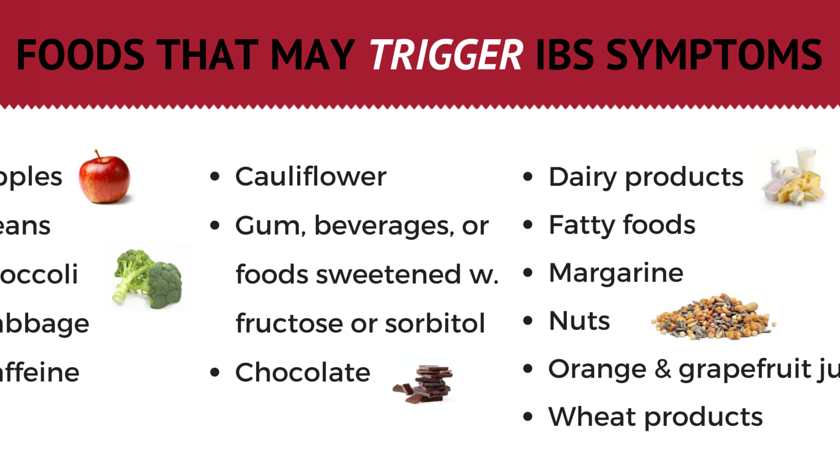Ladies, belly fat can make a sudden appearance soon after your 40th birthday. Here are essential tips to keep abdominal fat at bay even as you age.
Belly fat can catch even the slimmest of women by surprise with its sudden appearance especially closer to the age group of 40. Hormonal changes, especially drop in estrogen could be one of the biggest culprits apart from a sedentary lifestyle, that could be responsible for this unwelcome fat accumulation. It’s not just about feeling bloated and uncomfortable with these extra pounds around the stomach; belly fat is considered one of the unhealthiest kinds of fats as it’s not just restricted to skin, but accumulates in the internal organs. However, the good news is if you lead an active lifestyle, eating foods from all nutrition groups and sleep well, you could easily escape this health threat.
The crucial perimenopause plays a big role when it comes to significant changes in women’s physical and mental health. There could also be decrease in muscle mass as you age which could lead you to burn fewer calories than required and this could give a perfect opportunity to fat tissues to accumulate around belly.
“Are you feeling like your once-loyal metabolism has taken a vacation in your 40s, leaving you with the unwelcome surprise of belly fat? You’re not alone! Many individuals experience this shift in their midlife years, but there’s no need to fret. The decrease in the hormones estrogen and progesterone during perimenopause prompt significiant changes in the body. The biggest change is a decrease in muscle mass which causes you to burn fewer calories. The muscle tone from reduced hormone production is often replaced by fatty tissue deposits, typically around the midsection. Genetics, also are a factor. However, with diet and lifestyle changes, there is a way to prevent midlife belly fat accumulation and/or reverse it,” says Nutritionist Bhakti Arora Kapoor.
Let’s explore the reasons behind this and how to regain control of your body!
Reasons of belly fat post 40 in women
Hormonal changes: Decreased oestrogen and increased cortisol levels can slow your metabolism and promote belly fat storage.
Lifestyle factors: Busy schedules and increased stress often lead to poor dietary choices and a sedentary lifestyle, making it easier for belly fat to accumulate.
“By prioritizing a balanced diet, regular exercise, and stress management, you can reclaim control over your body and promote overall health and vitality. Remember, it’s never too late to make positive changes and embrace a healthier, happier you!” says Kapoor.
How to reduce belly fat post 40
Balanced diet
What you eat can definitely affect your waistline once you cross the threshold of 40. Eating processed, sugary and high-fat foods can add to your bulge, while consuming lots of fruits and vegetables, whole grains, lean proteins, and healthy fats can help you shed belly fat.
Stay stress-free
It’s true that your thoughts can also have an impact on your belly fat. Stressful thoughts can lead to hormonal imbalance and this can further result in belly fat gain. Staying stress-free, meditating and doing activities of your liking can help tackle this risk factor for belly fat post 40.
Exercise
There is nothing that can beat the positive effects of exercising in reducing belly fat. Working out not only reduces inches but also makes you feel good about yourself. You can go for cycling, walking, Zumba, swimming and anything that you like doing which also doubles up as exercise.
Sleep
Sleeping less may disturb your circadian rhythum while sleeping for the required hours can work wonders for your hormones. When you are well rested, your body functions work smoothly and your moods are regulated. This ensures your belly fat stays off.
How to consume fenugreek seeds for reducing belly fat; know all benefits of methi
Fenugreek seeds have been used for medicinal purposes since time immemorial. This ancient remedy can also help reduce belly fat by curbing appetite.
Belly fat or abdominal fat has been garnering a lot of attention in recent years. As people are trapped in the web of sedentary habits, the adverse effects are visible in the form of fat accumulation in various parts of the body, the most concerning of which is belly fat which is also known as visceral fat. What is peculiar about this kind of fat is that it surrounds internal organs, affecting their function and putting one at risk of chronic diseases. It is also very difficult to lose belly fat and thus it’s crucial to form strategies to get rid of it effectively. Fenugreek or methi seed can be quite useful in reducing belly fat. Fenugreek seeds have been used for 6,000 years by Indians, Greeks, Egyptians and Romans for various medicinal purposes which includes cutting fat. Let’s find out more about this ancient remedy.
What is fenugreek or methi?
Fenugreek or methi is a fragrant and flavourful herb which is seen in Indian kitchens frequently and is used extensively for culinary purposes. Be it paratha, stir-fry, saag, mathri, or various kinds of curries, methi gives distinct flavour to each of these preparations. It’s hard to miss the aroma of fenugreek that may also elevate your feel-good or happy hormones.
While fresh methi leaves are consumed as a vegetable, when dried they form a spice called kasuri methi. In India, fenugreek seeds were given to nursing mothers to increase the flow of milk. Fenugreek seeds were also used to treat fever, vomiting, poor appetite, diabetes, constipation and many other ailments in ancient times. People in ancient times used fenugreek seeds in their beauty regime. They were used as hair packs and face packs.
“Fenugreek seeds are used as an ingredient in spice blends and as a flavouring agent in foods, beverages, and tobacco. It is an annual herb which has compound leaves of light green colour. Fenugreek or Trigonella foenum-graecum is known by many names like methya, menthya, vendhayam, and menthulu. It brings with it nostalgic aroma of saag, parathas, malai methi curries, kashiphal etc along with key ingredients in panch-phoron, curry powder, sambar and tadkas. But along with its distinct flavours, its leaves and seeds are very beneficial for our system,” says Smita Khanna Roy Chowdhury, Lifestyle coach, Golfe View healthcare & research institute.
Fenugreek seeds are brownish-yellow and have a peculiar odour. This nutritious microgreen is grown in the cooler months of autumn to spring. It is grown in both the cropping seasons of Rabi and Kharif in South India.
Nutritional profile of fenugreek seeds
“Fenugreek seeds contain 13.7 per cent moisture, 26.2 per cent protein, 5.8 per cent fat, 3 per cent minerals, 7.2 per cent fibre and 44.1 per cent carbohydrate per 100 gm. They contain calcium, phosphorous, carotene, thiamine, riboflavin, and niacin. The seeds contain alkaloid, trigonelline and choline, essential oil and saponification,” says Khanna Roy Chowdhury.
Ancient use of fenugreek seeds
The seeds of fenugreek plant have been used for both culinary and medicinal purposes since ancient times. Thousands of years back, ancient Egyptians used it for different purposes from treating burns to mummification. For ancient Greeks, fenugreek was a remedy to treat infections while Romans used it as a fever remedy and cure for respiratory and intestinal issues.
Khanna Roy Chowdhury shares how fenugreek seeds were used in ancient times
It is believed that fenugreek was known in the Indian cuisine even 3,000 years ago. Traditionally fenugreek seeds were not only used by each and every household as a wonder condiment for flavouring or food but also used in cattle feeds. Fenugreek seeds were made into a gruel or halwa and were given to nursing mothers to increase the flow of milk. Fenugreek has excellent medicinal virtues. It was used in fever, vomiting, poor appetite, diabetes, constipation and many other ailments in ancient times. It was used for beauty aids too. Fenugreek seeds were used as hair packs and face packs too.
Benefits of fenugreek seeds
Khanna Roy Chowdhury says that fenugreek seeds are most effective in promoting lactation of nursing mothers and reducing belly fat. The seeds are also useful in reducing fever and treating flatulence.
1. Fenugreek seeds exercise a smoothing effect on the skin and mucous membranes, relieving any skin irritation of the skin and alleviating swelling and pain.
2. They increase the secretion and discharge of urine.
3. They relieve flatulence.
4. They promote lactation in nursing mothers.
5. Tea made from seeds help in reducing fever.
6. As it is high in fibre and antioxidants, fenugreek seeds are excellent for diabetics.
7. Fenugreek seeds are useful in removal of dandruff.
8. It’s a wonder seed in reducing abdominal fat. Galactomannan, a water-soluble component found in fenugreek seeds is quite effective in suppressing appetite. Its high fibre content helps in reducing bloating and acts as a laxative.
How to add fenugreek seeds to your diet for belly fat
Khanna Roy Chowdhury shares how one can use fenugreek seeds to reduce abdominal fat.
Soak 1 tsp-2 tsp of unadulterated washed fenugreek seeds overnight and have them first thing in the morning.
Boil 1 tsp fenugreek seeds in 250 ml of water and enjoy the tea to reap the benefits.
Remember large doses may cause a harmful drop in blood sugar and can cause allergic reactions in some. Potential side effects of fenugreek include diarrhoea, nausea, and other digestive tract symptoms and rarely, dizziness and headaches.
Who should not have fenugreek seeds?
Fenugreek consumption in small amounts do not lead to any major effects, but excessive consumption can lead to an upset stomach, as the plant is high in fibre.
Khanna Roy Chowdhury shares possible side effects of methi seeds
1. Pregnant women should avoid having fenugreek seeds as it may lead of abortions as methi seeds contain oxytocin which plays important role in reproduction and uterine contractions.
2. People with diabetes should be careful in using methi seeds as medications are used to lower and balance blood sugar levels.
3. Skin rashes: A lot of people report of redness and skin rashes due to application of fenugreek seeds in herb form.
4. Diarrhoea: Because of insoluble fibre it can lead to diarrhoea. So, moderation is the key.






